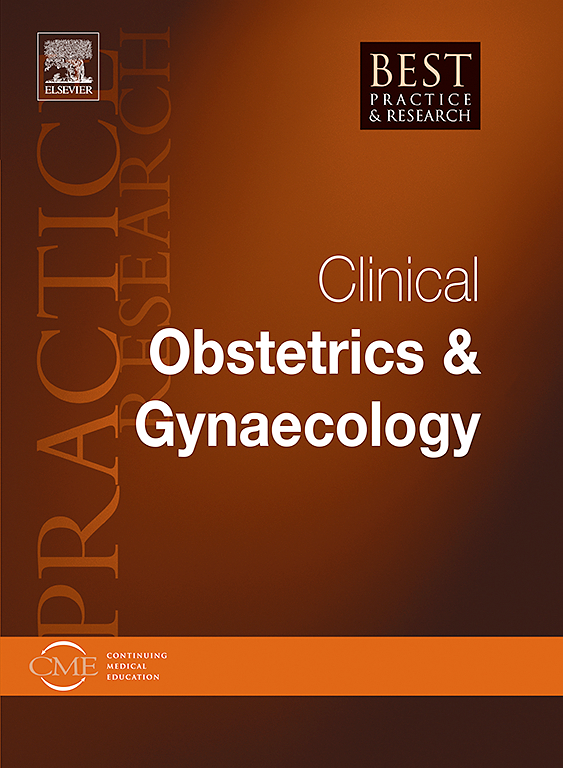评估胎儿介入治疗先天性下尿路梗阻的候选资格:一项全面的综述
IF 4.1
2区 医学
Q1 OBSTETRICS & GYNECOLOGY
Best Practice & Research Clinical Obstetrics & Gynaecology
Pub Date : 2025-05-29
DOI:10.1016/j.bpobgyn.2025.102616
引用次数: 0
摘要
先天性下尿路梗阻(LUTO)是一种罕见但严重的胎儿疾病,每10,000个活产婴儿中约有2.2个受到影响。它与羊水过少、肺发育不全和肾功能不全等并发症有关。产前干预提供了潜在的好处,提高围产期生存,然而,选择最合适的候选人进行干预一直是一个挑战。最近的研究强调用多学科方法评估LUTO患者。胎儿干预的标准是根据国际德尔菲共识建立的,包括LUTO的影像学表现,没有限制生命的结构或遗传异常,胎龄≥16周,羊水过少的存在。尽管膀胱充盈和胎儿尿液生化可以为预后和咨询提供额外的见解,但它们在候选人选择中的确切作用仍不确定。未来的研究应侧重于开发更可靠的生物标志物,以加强LUTO的评估和评估肾功能。本文章由计算机程序翻译,如有差异,请以英文原文为准。
Assessing candidacy for fetal intervention in congenital lower urinary tract obstruction: A comprehensive review
Congenital Lower Urinary Tract Obstruction (LUTO) is a rare but severe fetal condition, affecting approximately 2.2 per 10,000 live births. It is associated with complications such as oligohydramnios, pulmonary hypoplasia, and renal dysfunction. Prenatal interventions offer potential benefits in improving perinatal survival, however, selecting the most suitable candidates for interventions has been a challenge.
Recent research emphasizes the evaluation of LUTO patients with a multidisciplinary approach. Criteria for fetal intervention were established in an international Delphi consensus, and includes imaging findings indicative of LUTO, the absence of life-limiting structural or genetic anomalies, gestational age ≥16 weeks, and the presence of oligohydramnios. Although bladder refill and fetal urine biochemistry may provide additional insights into prognosis and counseling, their precise role in candidate selection remains uncertain.
Future research should focus on developing more reliable biomarkers to enhance the evaluation of LUTO and assess renal function.
求助全文
通过发布文献求助,成功后即可免费获取论文全文。
去求助
来源期刊
CiteScore
9.40
自引率
1.80%
发文量
113
审稿时长
54 days
期刊介绍:
In practical paperback format, each 200 page topic-based issue of Best Practice & Research Clinical Obstetrics & Gynaecology will provide a comprehensive review of current clinical practice and thinking within the specialties of obstetrics and gynaecology.
All chapters take the form of practical, evidence-based reviews that seek to address key clinical issues of diagnosis, treatment and patient management.
Each issue follows a problem-orientated approach that focuses on the key questions to be addressed, clearly defining what is known and not known. Management will be described in practical terms so that it can be applied to the individual patient.

 求助内容:
求助内容: 应助结果提醒方式:
应助结果提醒方式:


